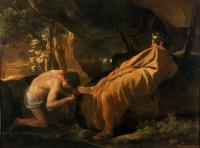Friday, January 25, 2013 -  armed robbery,art conservation,art damage,Auckland Art Gallery,James Tissot,museum theft,New Zealand,restoration,Stolen Art Recovered
armed robbery,art conservation,art damage,Auckland Art Gallery,James Tissot,museum theft,New Zealand,restoration,Stolen Art Recovered
 No comments
No comments
 armed robbery,art conservation,art damage,Auckland Art Gallery,James Tissot,museum theft,New Zealand,restoration,Stolen Art Recovered
armed robbery,art conservation,art damage,Auckland Art Gallery,James Tissot,museum theft,New Zealand,restoration,Stolen Art Recovered
 No comments
No comments
Portrait of a Museum Robbery: The 1998 Theft of Tissot's "Still on Top" from the Auckland Art Gallery Toi o Tamaki
At ten minutes past 11 o'clock in the morning on Sunday, August 9th, 1998, a man with a shotgun entered the Auckland Art Gallery, threatened nearby visitors, then went directly to one of the collections most valuable paintings, James Tissot's "Still on Top" (c 1873). The thief ripped the painting from the wall, smashed its glass into the painting, and used a crowbar to pry the canvas out of its frame. He then ran outside the gallery into a nearby park and escaped on a motorcycle. The robbery took less than four minutes.
Here in this YouTube video, Auckland Art Gallery - Restoring Tissot, is surveillance footage of the crime, the story of the damaged painting recovery nine days later, and the long process of restoration for public display.
 |
| James Tissot's "Still on Top" |
Many of the original newspaper stories published in The New Zealand Herald can be ordered via email through the Auckland City Council Library here.
The man arrested eight days later had demanded a ransom of more than $260,000 from the Auckland Art Gallery and hidden the damaged work underneath a bed. One year later, Anthony Sannd was found guilty and sentenced to nearly 17 years in jail, including charges related to two armed robberies of a security van and a bank branch.
The New Zealand art museum accepted $500,000 for the loss in value for the damaged Tissot painting and was able to repair the work and return it for public display three years later.
On February 1, 2005, the thief, Anthony Sannd (also known as Ricardo Genovese), escaped from a prison farm and eluded recapture for almost four weeks (during which time he was alleged to have stolen a BMW and burgled a home). Two more years was added to his sentence. Sannd was released from jail in March 2012. Then Sannd filed a claim that the government owed him $100,000 for keeping him in jail six months longer than he had been sentenced.













